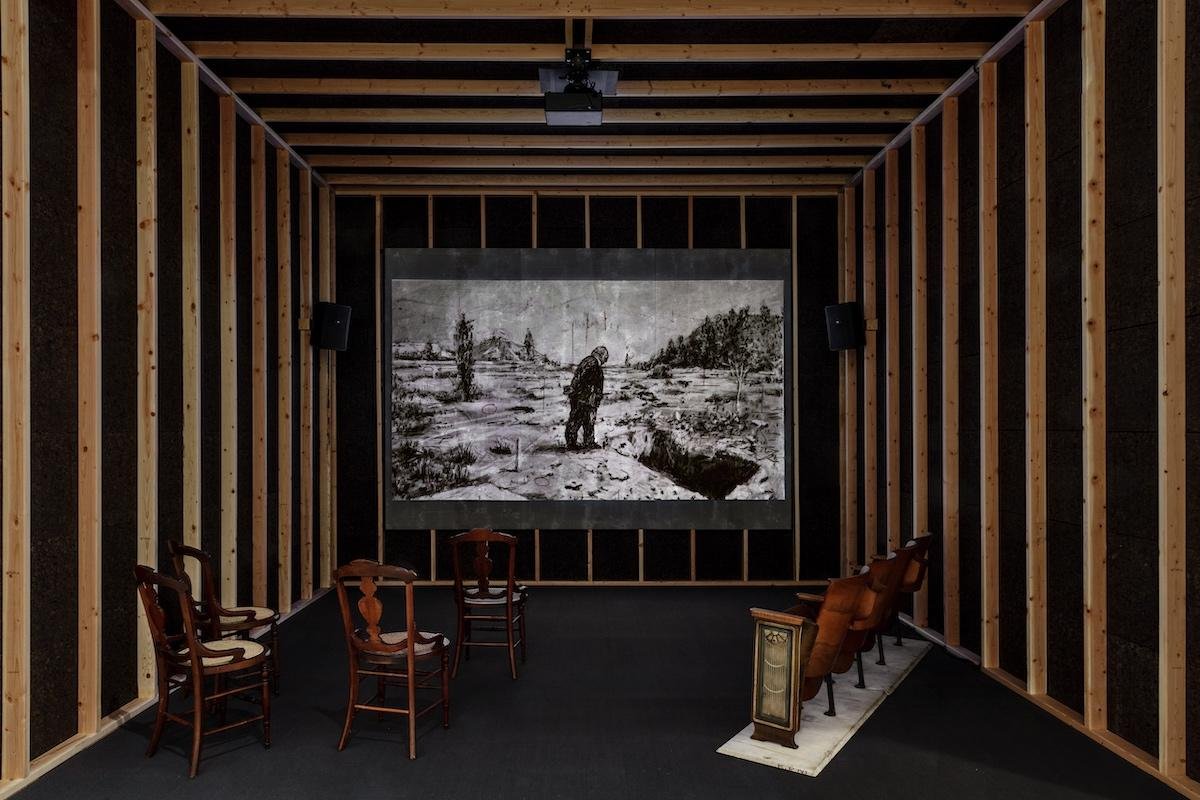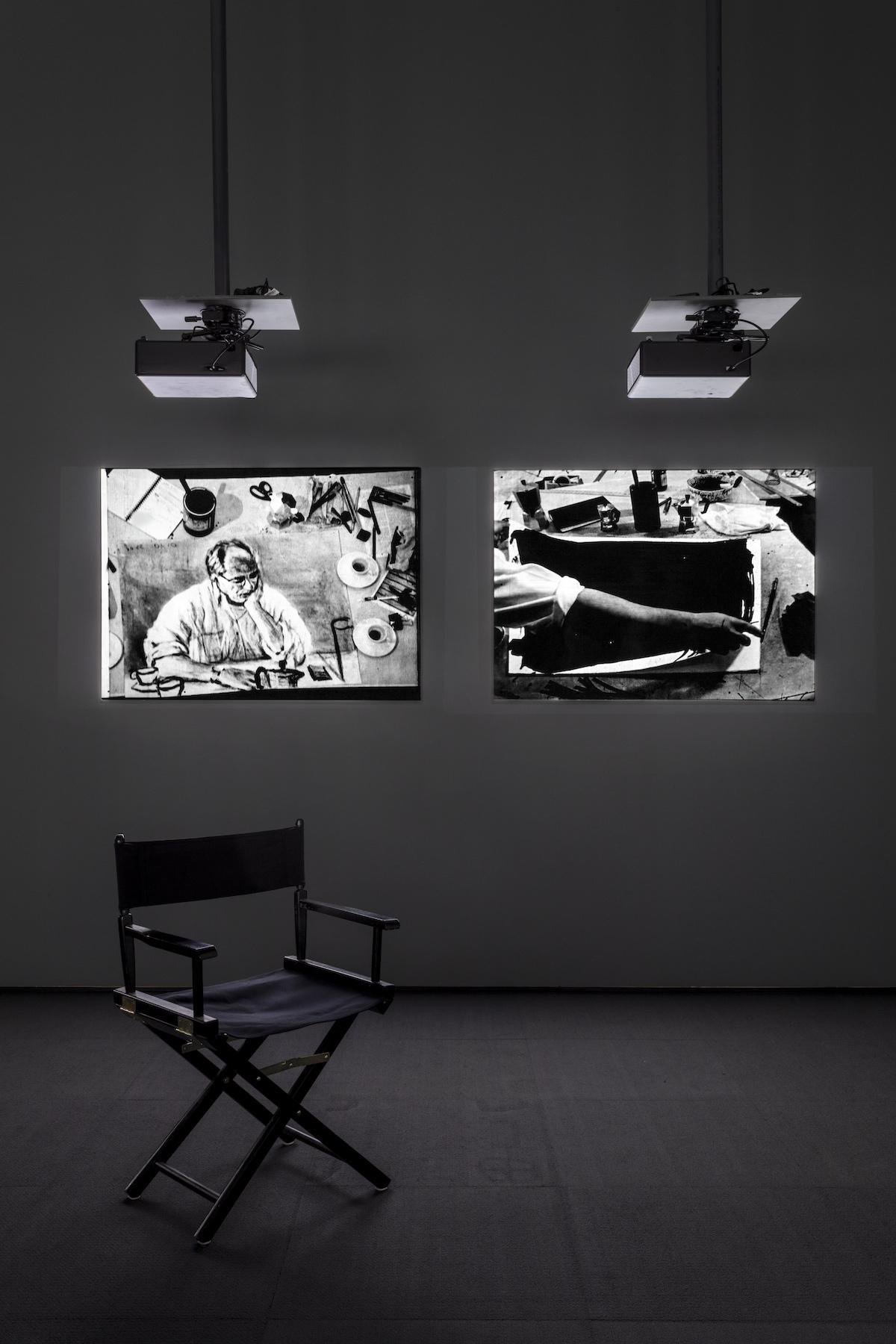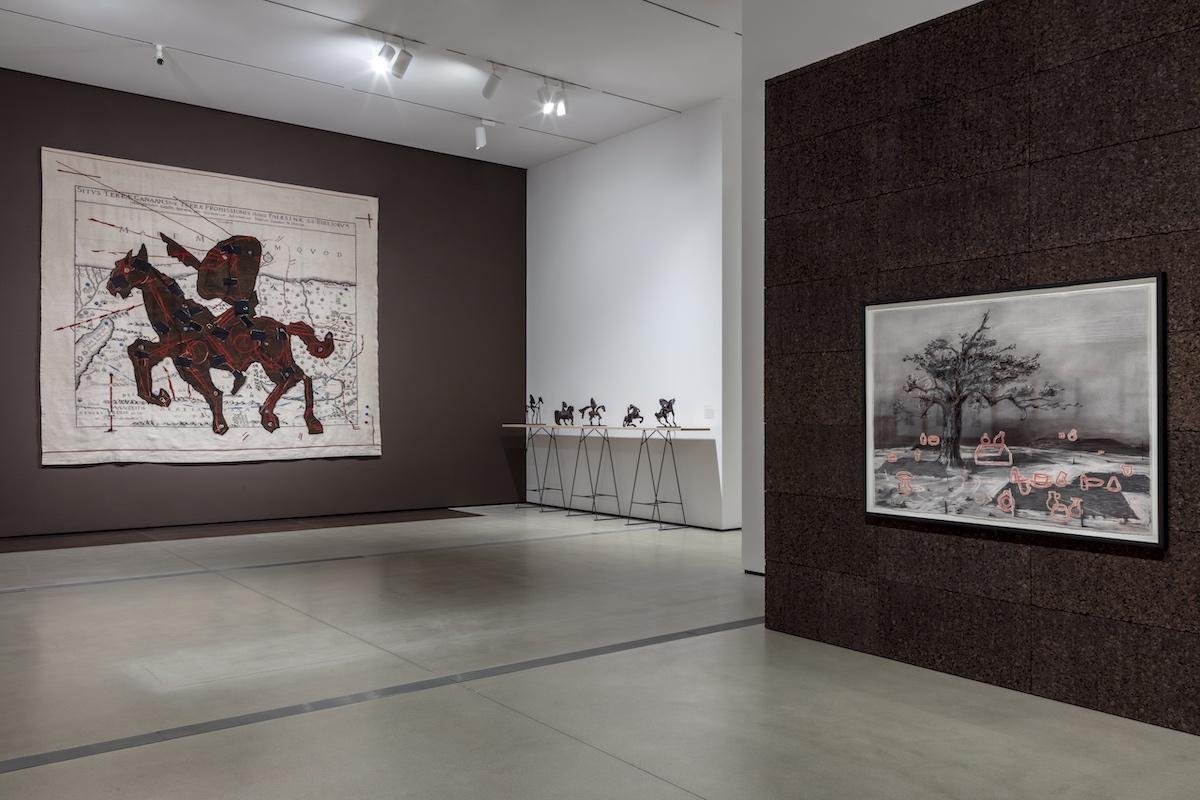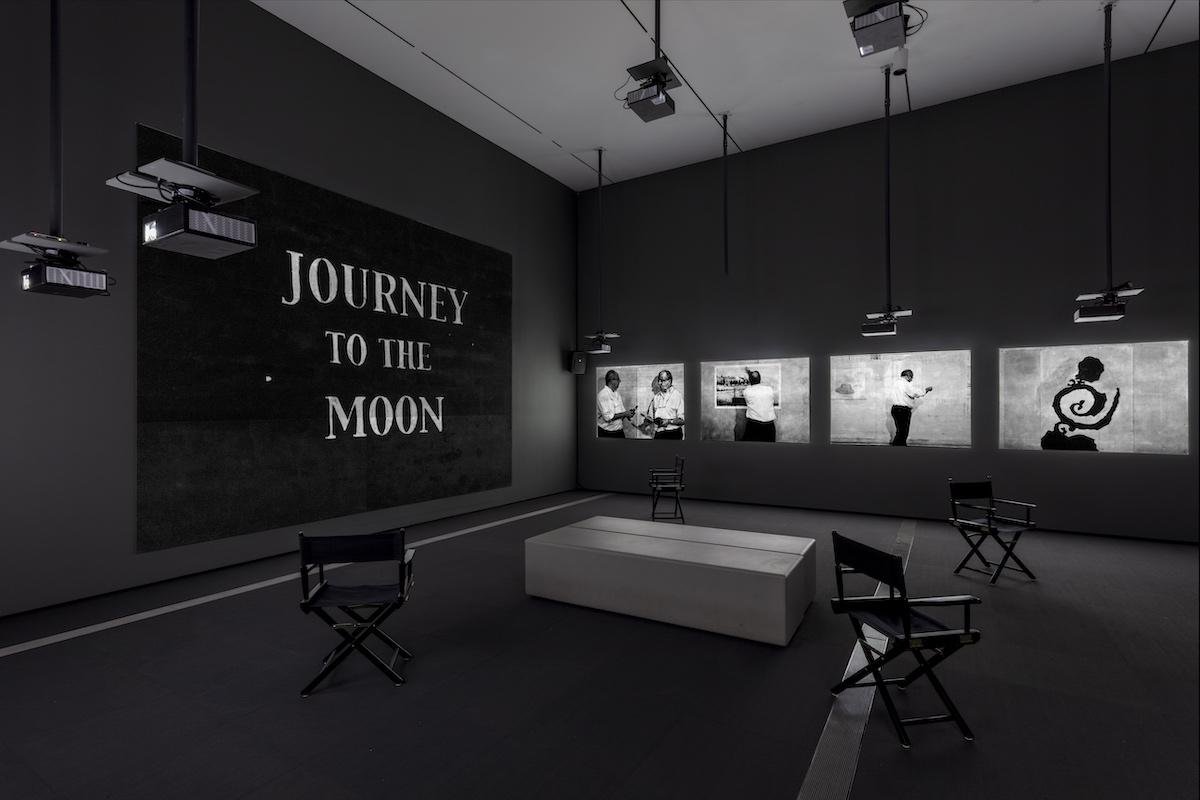Art & Object : In Conversation with William Kentridge (by Jordan Riefe)
William Kentridge: In Praise of Shadows exhibition at The Broad, Los Angeles, November 12, 2022 – April 9, 2023.
Fundamental to the art of William Kentridge is charcoal, a simple prehistoric medium that has long anchored his multi-disciplined, intellectually epic body of work. Frequently referred to as South Africa’s Goya for his rough-hewn depictions of life in Johannesburg through the politically tempestuous 1980s and 1990s, he could also be called that country’s Duchamp, Disney, or Daumier. Such comparisons are feeble and reductive. William Kentridge is William Kentridge. His practice is best described not by words but by his work in a career survey currently showing at LA’s The Broad museum through April 9.
“William Kentridge: In Praise of Shadows” is his largest show ever mounted in the US, outdoing MoMA’s “Five Themes” exhibit of 2010. It includes eighteen new works among 130 film installations, sculptures, tapestries, and, of course, charcoal drawings. To kick off the run, Kentridge will direct the international debut of “Houseboy” at LA’s REDCAT (Nov. 17–20). Based on the 1956 novel by Cameroonian diplomat Ferdinand Oyono, the performance explores themes of memory and post-colonial identity with one of Kentridge’s large-scale charcoal drawings serving as a backdrop.
William Kentridge: In Praise of Shadows exhibition at The Broad, Los Angeles, November 12, 2022 – April 9, 2023.
“There’s always a work or a mixture of works that you’re happy to see. It’s a mixture between what the curator wants and my suggestions,” Kentridge tells Art & Object as he wanders through the installation, gazing at charcoal renderings. “It’s not like the point of a pencil. You can’t tell it where to go in the same way. You have got to take on trust where the nub of the charcoal is actually hitting the paper.”
The medium’s malleability allows Kentridge to alter his images with a wipe of a cloth, executing ideas as quickly as they come to him. It wasn’t his original intention to do animation; nor did he intend on photography – he initially employed a camera only to track the process of a drawing in an effort to pinpoint where it begins to go wrong.
“Very often something that’s really gone bad is a great help because then you feel nothing about tearing it up, rearranging it, cutting into fours, and putting it in different positions. Whereas if a drawing is going well, it suddenly gets precious and you start drawing very meekly and cautiously so as not to mess up what you’ve done."
By filming the drawing, he realized that it didn’t have to reach its final stage. And so with moving images a cat becomes a coffee pot as impulse takes hold of the process. “That’s the nature of animation. The drawing is this but it can become something else. It's not always working toward a finality, which a painting always is.”
Unlike traditional animators, Kentridge executes a drawing on paper hanging in his studio. He films it, erases portions, and redraws it, only slightly changed, then films it again. The results are short monochrome movies with unrefined figures connected more by theme than narrative.
“I’m not after precision and I'm not after chaos,” he says of his process. “I’m after allowing uncertainty to hold the floor for as long as possible.”
In 2017, Kentridge founded Johannesburg’s Centre of the Less Good Idea, an experimental arts space based on the notion that the initial spark to a work might fade into irrelevance through the process. So, artists must remain alert to new possibilities. “A great poet once said it’s important that the poem is smarter than the poet. If the poet is smarter than the poem then they shouldn't be writing the poem.”
William Kentridge: In Praise of Shadows exhibition at The Broad, Los Angeles, November 12, 2022 – April 9, 2023.
Short films like “Monument” and “Mine” reflect Kentridge’s hometown of Johannesburg, a city built on gold mining and the exploitation of Black workers by minority White owners. It features two recurring characters in his “Drawing For Projection” series of eleven films; Soho Eckstein, an industrialist, and Felix Teitelbaum, an artist and Kentridge’s alter ego.
“He was,” he corrects me, signaling a change of heart after thirty years of drawing the two. “I’ve grown to look more and more like Soho Eckstein. When they were two separate characters, I could really work with them. And I suddenly realized at some point that they're just two aspects of myself.”
William Kentridge: In Praise of Shadows exhibition at The Broad, Los Angeles, November 12, 2022 – April 9, 2023.
Born into a family of lawyers and activists in 1955, Kentridge is the grandson of Morris Kentridge, a left-leaning member of South Africa’s House of Assembly from 1920 through 1958. The same year William was born, his father, Sydney Kentridge and a team of civil rights lawyers represented Nelson Mandela along with 156 activists on trial for treason. Years later he represented anti-apartheid activist Steven Biko around the time of his death at the hands of police. William’s mother, Felicia co-founded the Legal Resource Centre aimed at dismantling apartheid.
William Kentridge: In Praise of Shadows exhibition at The Broad, Los Angeles, November 12, 2022 – April 9, 2023.
“It’s formative in the sense of understanding that the whole structure of society is not so stable, not so benevolent, it's not the way it’s presented to you,” he says of growing up in a family of lawyers and activists. “So, there’s always the sense of the gulf between the appearance of something and its reality.”
At the University of the Witwatersrand (Wits), Kentridge studied fine arts but later shifted his major to political science and African Studies. After co-founding The Junction Avenue Theater Company in Johannesburg, he studied mime at Ecole internationale de théâtre Jacques Lecoq in Paris. Past productions are explored in the exhibit, like 2005’s “The Magic Flute” which he directed at Brussels’ Theatre Royal de la Monnaie. Also on hand are drawings for Shostakovich’s “The Nose” which he directed at the Met in 2010. While still a student, he performed in a production of Alfred Jarry’s “Ubu Roi,” a character that frequently recurs in his artwork.
At the University of the Witwatersrand (Wits), Kentridge studied fine arts but later shifted his major to political science and African Studies. After co-founding The Junction Avenue Theater Company in Johannesburg, he studied mime at Ecole internationale de théâtre Jacques Lecoq in Paris. Past productions are explored in the exhibit, like 2005’s “The Magic Flute” which he directed at Brussels’ Theatre Royal de la Monnaie. Also on hand are drawings for Shostakovich’s “The Nose” which he directed at the Met in 2010. While still a student, he performed in a production of Alfred Jarry’s “Ubu Roi,” a character that frequently recurs in his artwork.
William Kentridge: In Praise of Shadows exhibition at The Broad, Los Angeles, November 12, 2022 – April 9, 2023.
“I played the part of Captain Manure and I played the part of a dancing bear,” he laughs about appearing in the avant-garde play. “It’s still the best description of aggrandizement and self-pity that you find in that kind of political figure, an absolute despot or someone who has this mixture of narcissism and self miserable pity. You find it in someone like Trump that clearly fits the bill in all those cases. So, it was a very good figure to use when you’re doing a play about politics in South Africa.”
His most recent piece is a nine-part film series, “Self-Portrait As A Coffee Pot” made in collaboration with legendary film editor Walter Murch. Portions that premiered at the 2022 Toronto International Film Festival featured the artist during the COVID lockdown, drawing landscapes and self-portraits in his studio.
“There are many processes that aren’t visible in the outside world that are very physical in the artist's studio. For example collage, it's a little like old masters taking sketches from different places to make an image that appears coherent. This is how we construct our world in our daily understanding – this dream, that conversation, this thing I read,” he explains. “Do the work, it’s going to show who you are. If you’re a self-satisfied apolitical prick, it will show you who you are. If you’re overambitious, if you're pretentious, that will come through the work. You learn something about yourself. It is what it is."
The Broad show is anchored by the 2012 installation, “The Refusal of Time,” an immersive work incorporating sound, sculpture, and moving images commenting on the standardization of time imposed by European interests on the rest of the globe. At its center is a large wooden rhythmic bellow standing about twelve feet. It’s the second closest way to get inside Kentridge’s brain. The first way is to visit his studio, often papered with dozens of sketches and projects in various stages of completion. It’s where artmaking is a metaphor for the mind.
Article published on https://www.artandobject.com






